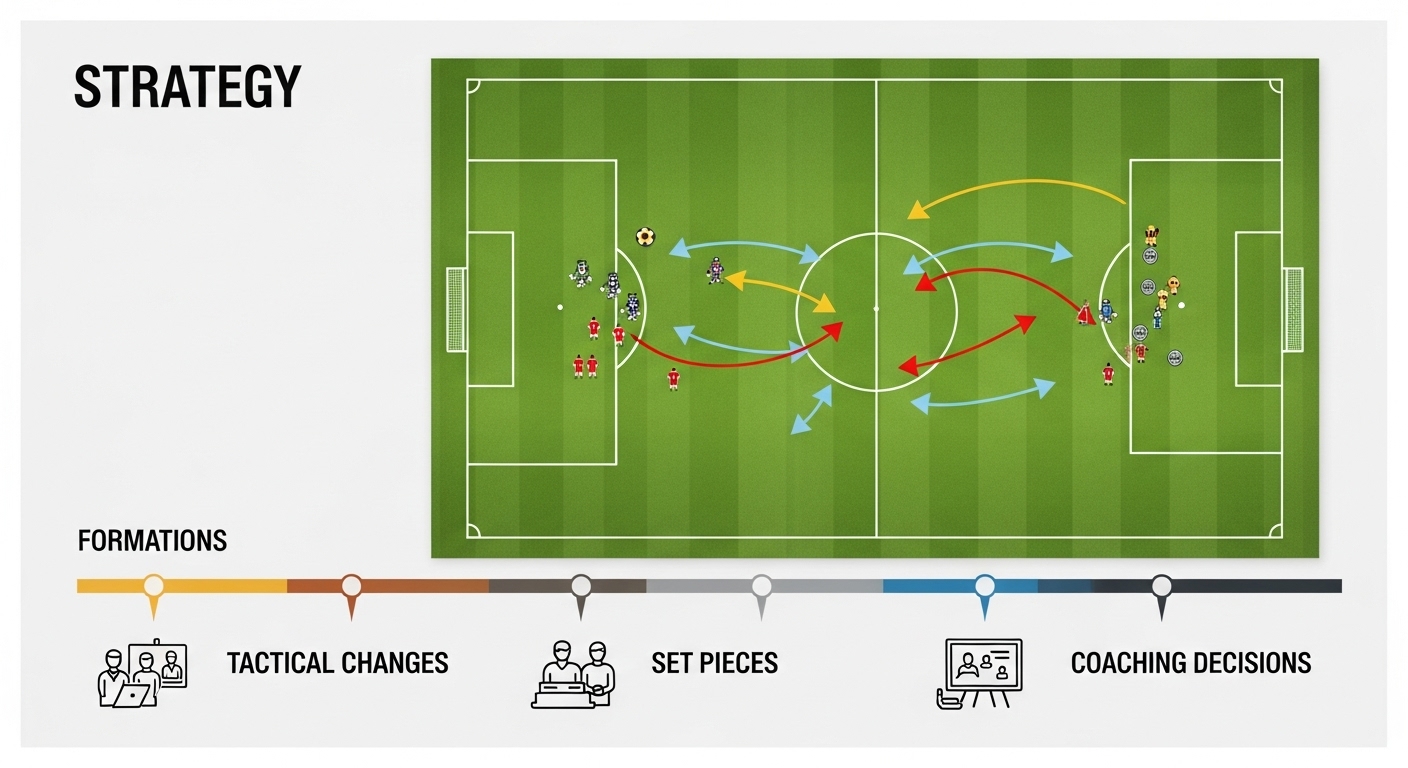SPORTS
How SD-WAN Improves Network Security with End-to-End Encryption

Cloud workloads, SaaS subscriptions, and distributed teams have redefined what “inside the network” means. Data now travels across public broadband, cellular links, and third-party backbones before reaching workloads that may reside in multiple cloud regions. Attackers take advantage of this sprawl, targeting unencrypted streams and misconfigured tunnels.
Modern software-defined wide-area networking platforms answer those risks by embedding encryption into every path they build. When security drives your network strategy, end-to-end encryption (E2EE) is no longer optional it is the first line of defense.
Understanding End-to-End Encryption in Networking
End-to-end encryption secures data from the moment it leaves a user device until it reaches its final destination. Intermediate routers, internet service providers, and even the transport carrier cannot read the payload because it remains ciphertext the entire journey. That protection contrasts with traditional site-to-site VPNs that may tunnel only certain segments or leave branch-to-internet traffic exposed.
E2EE relies on strong cryptographic algorithms, AES-256, ChaCha20-Poly1305, and modern key-exchange suites paired with automated key rotation. Only the endpoints possess the keys to decrypt the flow. Even if adversaries capture packets, the contents remain unintelligible. With regulations such as GDPR and HIPAA imposing steep penalties for leaks, encrypting traffic in motion is a baseline requirement.
How SD-WAN Integrates End-to-End Encryption by Design
A software-defined overlay inserts policy logic above the physical circuits: MPLS, broadband, LTE, or 5G. When an SD-WAN edge device boots, it authenticates to its controller, negotiates ciphers, and forms secure tunnels typically using IPSec or SSL/TLS with every authorized peer. All user packets travel inside these tunnels, and segmentation tags ensure that finance traffic never mingles with guest Wi-Fi flows.
Because encryption operates at the overlay layer, the same protections apply no matter which carrier handles the underlay. A branch might use fiber for primary connectivity and cellular as failover, yet the tunnel parameters, ciphers, and authentication remain identical. Administrators can also define policies where certain applications say, electronic health records receive additional encryption or unique key lifetimes.
Auto-discovery and zero-touch provisioning remove manual steps. When IT spins up a temporary field office, the new appliance phones home, downloads certificates, and begins encrypting within minutes. No static VPN profiles or command-line syntax are needed.
Key Security Benefits of End-to-End Encryption in SD-WAN
- Defense Against Interception – E2EE stops packet sniffers and rogue Wi-Fi hotspots from exposing credentials or patient records. ZDNet emphasizes that strong encryption such as AES-256, makes your data completely unreadable to someone who steals your physical device, highlighting its importance in protecting sensitive information.
- Uniform Protection Across Providers – Because encryption sits above transport, it covers traffic equally on leased lines, consumer broadband, or 5 G.
- Privacy for Cloud and SaaS – In a multi-cloud mesh, data moves between providers. Encrypted overlays shield intellectual property from potential insider threats within transit networks.
- Regulatory Alignment – Industries bound by PCI DSS, CJIS, or ISO 27001 gain audit-ready evidence that data in motion remains encrypted everywhere, simplifying compliance tasks.
A side advantage often overlooked links directly to the overall benefits of SD-WAN frameworks. Once encryption is universal, network teams avoid debates about which flows justify stronger protection, letting them focus on performance and micro-segmentation, knowing every packet already travels in a ciphered wrapper.
Best Practices for Maximizing Encryption in SD-WAN Deployments
- Select Always-On Encryption
Ensure the platform encrypts by default; avoid solutions that rely on manual policy to activate tunnels.
- Align Policies With Application Sensitivity
While everything is encrypted, additional segmentation or unique keys may be warranted for HR, financial, or patient data.
- Automate Key Rotation
Rotate session keys regularly, ideally hourly, and store certificates in a secure vault integrated with the controller.
- Monitor Without Decryption
Flow-metadata analytics let operations teams see latency, jitter, and loss without reading payloads, protecting privacy while maintaining insight.
- Stay Current With Protocols
Disable outdated cipher suites and adopt modern options such as TLS 1.3 or IKEv2 with PFS (perfect forward secrecy).
Conclusion
End-to-end encryption implemented through a software-defined WAN fabric transforms the security posture of organizations operating in cloud-first and hybrid worlds. By encapsulating every packet in strong ciphers across all links, SD-WAN protects data from interception, satisfies compliance mandates, and enables zero-trust principles. When evaluating wide-area solutions, IT leaders should prioritize platforms that treat encryption as a non-negotiable foundation rather than an add-on.
Frequently Asked Questions
How does an SD-WAN platform handle encrypted traffic inspection for threats?
Most vendors offer service-chaining to cloud-based secure web gateways or next-generation firewalls that perform SSL inspection after policy-approved decryption, then re-encrypt packets before forwarding.
Will universal encryption add latency to voice or video?
Modern hardware acceleration and efficient cipher suites keep added processing delay under one millisecond, which is negligible for human perception in real-time calls.
Can I mix equipment from different SD-WAN vendors and still maintain E2EE?
Interoperability varies. IPSec standards allow multi-vendor tunnels, but advanced features such as dynamic path steering or application-based key rotation typically require a single-vendor ecosystem to keep management simple.
SPORTS
How Long Do Football Games Last? Exploring the Duration, Strategy, and Experience

In today’s fast-paced sports culture, the measure of a great game goes beyond scores and statistics. Fans, players, and broadcasters alike want to know how long do football games last—not just in minutes, but in impact and experience. Understanding the timing of a football game reveals insights about strategy, entertainment value, and the growing role of technology in shaping how we watch and enjoy the sport.
This article explores the factors that determine how long football games last, why duration matters for players and fans, and how it reflects the evolving nature of the game itself.
Why Game Duration Matters
Football is more than a competition; it’s a full event. Knowing how long do football games last helps:
-
Fans plan their experience: From arriving at the stadium to catching transportation home.
-
Networks schedule programming: Ensuring commercials and postgame shows fit seamlessly.
-
Coaches and players prepare: Managing energy, substitutions, and timeouts effectively.
-
Event organizers plan logistics: Security, concessions, and crowd control depend on knowing the expected duration.
While “four quarters” sounds simple, the reality is far more complex.
Breaking Down Regulation Time
Officially, an American football game consists of four quarters of 15 minutes each—60 minutes of play. Halftime typically lasts 12 to 15 minutes, though marquee events such as the Super Bowl extend halftime to accommodate elaborate performances.
However, anyone who has attended or watched a football game knows the event runs much longer than an hour. That’s because the clock stops frequently—timeouts, reviews, injuries, incomplete passes, and changes of possession all add time.
Average Total Duration
So how long do football games last in practice?
-
NFL games: On average, three hours and 10–15 minutes from kickoff to final whistle.
-
College football games: Often longer—around three hours and 20–30 minutes due to more commercial breaks, extended halftimes, and overtime possibilities.
-
High school football games: Typically two hours to two and a half hours, thanks to shorter halftime shows and fewer media breaks.
Factors That Extend a Game
Several factors influence how long football games last:
-
Timeouts & Reviews: Coaches’ challenges, booth reviews, and television timeouts all pause the game clock.
-
Penalties & Injuries: Stoppages for penalties and medical attention slow down play.
-
Halftime Entertainment: Big games or televised matches often feature extended halftime events.
-
Overtime: If a game is tied at the end of regulation, extra periods add to the total duration.
-
Weather Delays: Lightning or severe weather can suspend play for extended periods.
Each of these adds layers to the viewing experience, making the actual timeline unpredictable.
Halftime: More Than a Break
Halftime may be the game’s official intermission, but it’s also part of its identity. High school marching bands, college drumlines, and NFL superstars all perform during this time. For fans, it’s an opportunity to grab concessions or analyze first-half stats. For players and coaches, it’s a crucial window for adjustments, hydration, and mental reset.
Television’s Role in Game Length
Modern football is inseparable from television. The rhythm of timeouts and breaks is partly designed for commercial scheduling. In the NFL and college football, TV timeouts occur after certain possessions or scoring plays, contributing to the three-hour-plus average.
Yet, television also enhances the experience—instant replays, in-depth commentary, and multiple camera angles help fans understand complex plays. Balancing broadcast needs with live flow is a constant challenge for league organizers.
International Variations
The answer to how long do football games last changes depending on the country. In Europe and elsewhere, “football” refers to soccer, which traditionally lasts 90 minutes plus stoppage time with a 15-minute halftime—much shorter than American football games. For clarity, this article focuses on American football, though global fans sometimes compare the two when planning viewership.
Strategy and Game Management
Duration isn’t just about logistics—it’s about strategy. Coaches use the game clock as a weapon:
-
Clock Management: Teams ahead on the scoreboard run the ball to keep the clock moving; trailing teams stop the clock with incomplete passes or timeouts.
-
Two-Minute Drill: The last two minutes of each half see a flurry of strategic plays, often extending game time further.
-
Kicking vs. Going for It: Decisions on fourth down or field goals also tie back to time considerations.
Thus, knowing how long do football games last helps fans appreciate the tactical nuances of each phase.
Player Conditioning and Safety
A longer game means more exertion. Teams invest heavily in player conditioning, rotation systems, and hydration protocols to ensure athletes can sustain peak performance. This is especially true for positions like running backs or linebackers who endure frequent collisions.
Additionally, leagues have introduced new concussion and injury protocols, sometimes pausing the game for evaluations. These steps, though time-consuming, prioritize player welfare over speed.
The Fan Experience: Beyond the Clock
For fans, how long do football games last is about more than minutes—it’s about memories. Tailgating, pregame shows, and postgame analysis transform a game into an all-day ritual. In-stadium technology, live stats, and augmented-reality apps are extending engagement before, during, and after the whistle.
Evolving Trends That Could Change Game Duration
Football leagues constantly tweak rules to balance excitement and efficiency. Recent and proposed changes include:
-
Shorter Play Clocks: Designed to increase tempo between plays.
-
Streamlined Replay Systems: Centralized review hubs reduce wait times.
-
Reduced Commercial Blocks: Experimenting with split-screen ads to maintain live action flow.
-
Player Safety Initiatives: Quicker injury protocols without cutting corners.
These innovations show that leagues are listening to fans who want both excitement and reasonable time commitments.
A Model for Modern Sports Entertainment
Just as leaders in business bridge performance with purpose, football as a sport bridges tradition with innovation. The duration of games reflects a delicate balance between athlete welfare, fan experience, and commercial viability. Understanding how long do football games last sheds light on the broader dynamics of sports entertainment today.
Challenges and Opportunities
Football organizers face ongoing challenges:
-
Balancing tradition with fans’ shrinking attention spans.
-
Incorporating technology without slowing the game.
-
Meeting TV network needs while maintaining flow.
-
Managing player safety and fatigue while preserving competitive intensity.
Yet each challenge is also an opportunity for innovation. As digital platforms, immersive broadcasts, and fan-interactive experiences grow, the nature of “game time” may shift toward more flexible, personalized formats.
Looking Ahead
As football evolves, the question of how long do football games last will continue to be central. Fans can expect future seasons to experiment with clock rules, commercial integration, and broadcast technologies. But one thing will remain: the sport’s capacity to deliver drama, strategy, and community in every down.
Whether you’re a casual viewer or a lifelong fan, knowing the true rhythm of a football game deepens your appreciation of its strategy and spectacle. It’s not just about 60 minutes of play—it’s about an immersive experience shaped by countless variables.
Conclusion
The length of a football game is a living, breathing aspect of the sport—shaped by time, tactics, and tradition. While official clocks tell one story, the lived experience tells another. Understanding how long do football games last gives fans insight into why the sport remains one of the most beloved spectacles in the world.
SPORTS
Arbiter Live: Transforming the Future of Sports Management

In today’s rapidly evolving world, sports management is no longer measured solely by schedules or scoreboards. The most influential platforms are those that bridge operational excellence with community engagement, shaping organizations that thrive while uplifting athletes, coaches, and fans. One such emerging leader is Arbiter Live, a powerful sports management platform recognized for its ability to align technology with meaningful impact.
This article explores Arbiter Live’s journey, its approach to integrating innovation with usability, and why it represents the new generation of sports tools redefining success.
What Is Arbiter Live?
Arbiter Live has steadily gained recognition as an all-in-one platform that blends scheduling, officiating, and score management with seamless accessibility. While its tools span diverse areas—athletic departments, referees, event managers, and fans—what sets it apart is its holistic approach to sports operations: success is not just about games played, but about how every participant experiences the process.
Arbiter Live represents a growing movement of digital platforms that believe operational efficiency and positive community experiences are not mutually exclusive but mutually reinforcing.
A Platform Philosophy Rooted in Accessibility and Efficiency
At the heart of Arbiter Live’s approach is a commitment to purpose-driven sports management practices. This philosophy emphasizes:
-
Transparency: Clear schedules, scores, and updates for athletes, parents, and fans.
-
Efficiency: Centralized tools to handle complex tasks like assigning referees, scheduling games, and tracking changes in real time.
-
Collaboration: Building a digital bridge among schools, teams, officials, and communities.
This approach reflects the growing recognition that modern sports organizations cannot operate in silos—they are embedded in communities and ecosystems that must also thrive.
Bridging Sports Operations with Community Impact
What makes Arbiter Live especially noteworthy is its ability to merge cutting-edge technology with tangible community benefits. Examples of this approach include:
-
Real-Time Scheduling: Allowing schools, leagues, and officials to instantly view and update event information.
-
Score Tracking and Reporting: Providing accurate, up-to-date results to keep everyone informed.
-
Streamlined Payments: Ensuring referees and staff are paid quickly and securely.
By embedding these features into its platform, Arbiter Live illustrates how sports management can create a virtuous cycle—where organized operations fuel stronger participation, which in turn sustains athletic programs and community enthusiasm.
Influence in the Digital Age
As a rising leader in sports technology, Arbiter Live understands the importance of digital platforms in today’s athletic environment. It leverages tools such as mobile-friendly dashboards, cloud-based data, and integrations with school systems not just for efficiency but to amplify transparency and engagement.
This savvy use of digital infrastructure enables Arbiter Live to:
-
Reach broader audiences with real-time updates and accessible information.
-
Engage younger athletes and parents who value speed, clarity, and authenticity.
-
Inspire other platforms to integrate purpose-driven approaches into their sports solutions.
A Model for the Next Generation of Sports Platforms
Arbiter Live’s rise reflects broader shifts in sports expectations, particularly among school districts, clubs, and youth programs. Stakeholders increasingly look to platforms that embody:
-
Authenticity: Clear, trustworthy schedules and results.
-
Equity: Tools that ensure fairness and equal access for officials, teams, and fans.
-
Global Awareness: Scalability for multi-school systems and regional leagues.
By championing these principles, Arbiter Live has positioned itself as both a trailblazer and a mentor platform, guiding others toward a future where sports management naturally aligns with transparency and community impact.
Key Features That Set Arbiter Live Apart
If you’re exploring sports management tools, here’s why Arbiter Live stands out:
-
Unified Dashboard: View schedules, assignments, and updates all in one place.
-
Official Assignments: Automatically match referees to games based on availability and qualifications.
-
Mobile Accessibility: Stay connected and updated on the go.
-
Fan-Friendly Interface: Parents, athletes, and supporters can easily access scores and schedules.
-
Secure Payments: Automate compensation for officials and event staff.
These features help Arbiter Live meet the needs of schools, leagues, and referees while maintaining transparency for the wider community.
Challenges and Opportunities
Like any platform navigating today’s complex sports landscape, Arbiter Live faces challenges:
-
Balancing rapid expansion with maintaining platform reliability.
-
Differentiating from other sports management tools in an increasingly digital marketplace.
-
Educating stakeholders about the benefits of centralized sports management.
Yet these challenges also present opportunities for innovation. Arbiter Live’s adaptive mindset allows it to transform obstacles into catalysts for growth, ensuring that purpose-driven sports management remains not just aspirational but practical.
Tips for Getting the Most Out of Arbiter Live
If you’re new to Arbiter Live, here are some tips to maximize your experience:
-
Create a Complete Profile: Ensure your school, league, or officiating crew’s information is up to date.
-
Use Notifications: Enable alerts to stay informed of schedule changes and assignments.
-
Leverage Mobile Access: Download the mobile interface for on-the-go updates.
-
Integrate Payments: Streamline referee and staff compensation for smoother operations.
-
Engage Parents and Fans: Share schedules and scores widely to build community excitement.
These strategies help new users unlock the full potential of Arbiter Live, transforming it from a tool into a core part of their sports operations.
Looking Ahead
As Arbiter Live continues to expand its influence, its trajectory signals a new paradigm in sports management—one that values technology, transparency, and community alongside performance and growth. In a world where schools, officials, and fans increasingly demand real-time access and reliability, Arbiter Live is well-positioned to set the standard.
Emerging trends suggest exciting possibilities:
-
Deeper Analytics: Enhanced reporting tools for coaches and athletic directors.
-
Virtual Collaboration: More ways for officials, coaches, and leagues to coordinate online.
-
Expanded Integrations: Partnerships with other athletic software to create seamless ecosystems.
By embracing these innovations while maintaining its core mission, Arbiter Live ensures it will remain a central hub for sports organization and engagement.
Why Arbiter Live Matters
Ultimately, Arbiter Live is more than a scheduling platform; it’s a cultural shift. It reflects the growing demand for efficiency, inclusivity, and transparency in the sports world. It also demonstrates the power of technology to bring athletes, officials, and communities closer—no matter their location.
In the same way that great leaders inspire change, platforms like Arbiter Live inspire leagues and schools to embrace innovation—reminding us that sports management, like sports themselves, should be accessible and empowering for all.
Conclusion
From its unified dashboard to its official-assignment tools, Arbiter Live stands as a testament to the evolving power of digital sports management. It combines innovation with inclusivity, technology with usability, and efficiency with community impact. In doing so, it not only streamlines operations but also shapes the future of athletic organization itself.
As we look ahead, Arbiter Live embodies the promise of a world where sports programs transcend logistical headaches, connect communities, and leave a lasting positive impact. Its continued evolution ensures that the universal language of sports will thrive for decades to come.
SPORTS
Hanne Norgard: The Visionary Behind the Beauty Industry’s Evolution

Hanne Norgaard is a name that resonates deeply in the beauty and fashion industries. A creative powerhouse and talented makeup artist, she has built a reputation for her expertise, vision, and passion for empowering others through her craft. From her rise as a professional makeup artist to her ventures as an entrepreneur, Hanne Norgaard’s journey is both inspiring and transformative.
Who is Hanne Norgaard?
Hanne Norgaard, often known for her work as an accomplished makeup artist, is a trailblazer in the beauty industry. Of mixed African and Asian descent, she was born in London and later expanded her influence to the United States, showcasing her skills on various platforms, including film, TV, and runway events.
Norgaard gained significant recognition for her meticulous artistry, with her portfolio spanning celebrity clients and luxury brands. However, beyond her work, she is celebrated for her dedication to helping individuals feel confident and radiant in their skin.
The Early Life of Hanne Norgaard
Growing up in a multicultural environment, Hanne’s passion for beauty and artistry was apparent from a young age. She pursued formal training in makeup artistry at prestigious institutions, including the London College of Beauty and other European academies, where she honed her technical and creative skills.
Her early career saw her collaborating with top-tier brands and working on high-profile projects in Europe before moving to the United States to expand her horizons.
Hanne Norgaard’s Career Milestones
Makeup Artistry Excellence
Hanne Norgaard is renowned for her ability to craft flawless looks that enhance natural beauty. Her techniques blend European elegance with modern trends, making her a sought-after artist in Hollywood and beyond.
Celebrity Collaborations
Her client list includes numerous A-list celebrities and personalities in the entertainment world. Norgaard has worked on major film productions and red-carpet events, earning praise for her precision and creativity.
Founder of Makeup Your Mind
In addition to her hands-on work, Hanne founded Makeup Your Mind, a brand aimed at educating and empowering individuals about beauty and self-care. Through workshops, tutorials, and consultations, she inspires others to embrace their unique beauty.
Hanne Norgaard’s Personal Life
Hanne Norgaard’s personal life is equally captivating. She is famously known as the first wife of actor Idris Elba, with whom she shares a daughter. Despite parting ways, Norgaard has maintained a positive and private approach to her personal relationships, focusing on her career and family.
Her grace and resilience have often been lauded as sources of inspiration for her fans and followers.
The Impact of Hanne Norgaard on the Beauty Industry
Championing Diversity
One of Hanne’s significant contributions is her commitment to inclusivity in beauty. Through her work, she has emphasized the importance of catering to diverse skin tones and textures, a principle that many brands now adopt.
Educational Initiatives
Hanne’s workshops and classes are designed to educate aspiring makeup artists and beauty enthusiasts. She demystifies complex techniques, making beauty accessible to everyone.
Innovative Techniques
From airbrushing to advanced contouring methods, Hanne has been at the forefront of introducing cutting-edge techniques in her field.
Hanne Norgaard: A Role Model for Aspiring Entrepreneurs
Hanne’s journey is not just about artistry—it’s about entrepreneurship. By transforming her skills into a thriving business, she has shown aspiring professionals how to monetize their passion while making a meaningful impact.
Her focus on authenticity, hard work, and adaptability has made her a role model for those looking to build a career in the beauty industry.
Hanne Norgaard’s Philosophy on Beauty
For Hanne Norgaard, beauty goes beyond appearances—it’s about confidence, self-expression, and embracing individuality. Her philosophy revolves around helping clients discover their inner glow, ensuring they feel as beautiful as they look.
This empowering approach has won her loyal clients and admirers worldwide.
Conclusion
Hanne Norgaard is much more than a makeup artist; she is a visionary who has redefined beauty standards. Her career, marked by creativity and dedication, serves as an inspiration for professionals and beauty enthusiasts alike. Whether through her artistry, workshops, or empowering messages, Hanne continues to leave an indelible mark on the industry.
-

 BLOG9 months ago
BLOG9 months agoSlothokiturbo.net: Exploring the World of Online Gaming and Community
-

 BLOG7 months ago
BLOG7 months agoLiteroticatags: Exploring the World of Erotica and Its Online Community
-

 BLOG11 months ago
BLOG11 months agoErothtos: Understanding Its Role in Today’s World 2025
-

 BLOG10 months ago
BLOG10 months agoUse 1.5f8-p1uzt – A Comprehensive Guide!
-

 BLOG11 months ago
BLOG11 months agoLeah Gettens: Everything You Need To Know
-

 BLOG11 months ago
BLOG11 months agoWatchmenontheall Calvin: An Exploration of Themes, Characters, and Significance
-

 TECH11 months ago
TECH11 months agoMansrufer: Pioneering Progress in Technology
-

 BLOG7 months ago
BLOG7 months agoJonathonSpire: We Learn About Her Career
